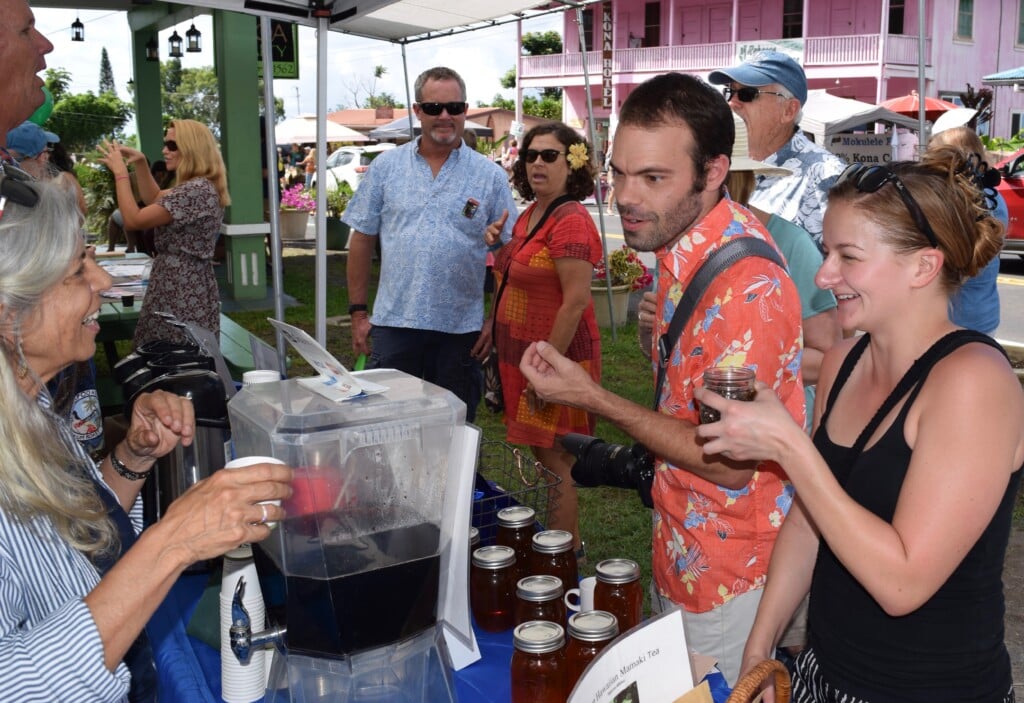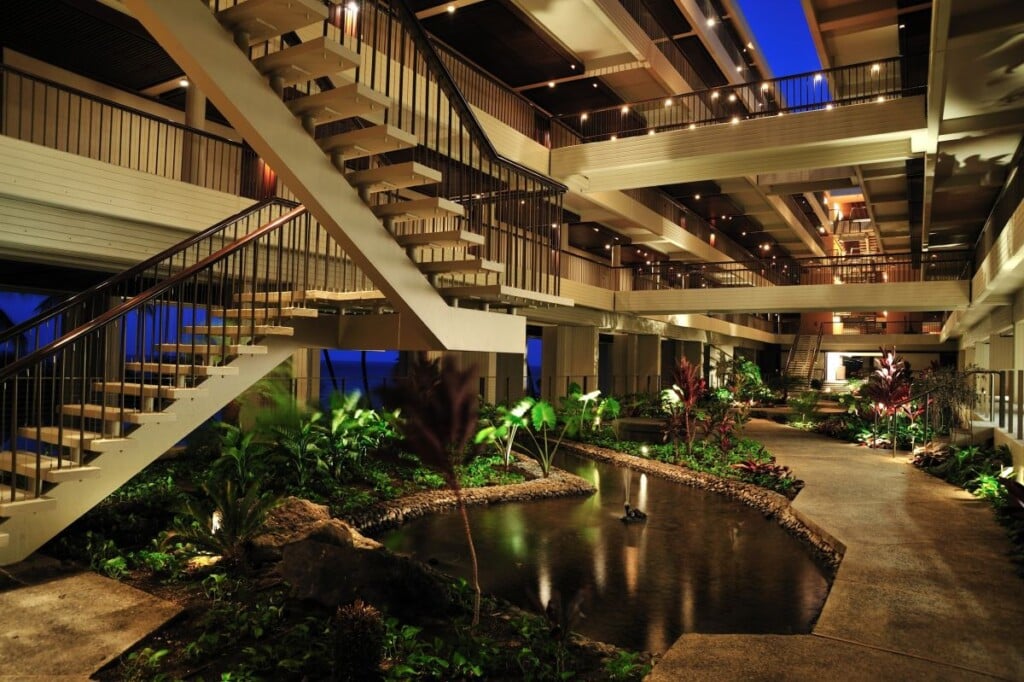Mauna Loa Erupts For the First Time in 38 Years—UPDATED
Here’s what you need to know if you’re traveling to Hawaiʻi Island.
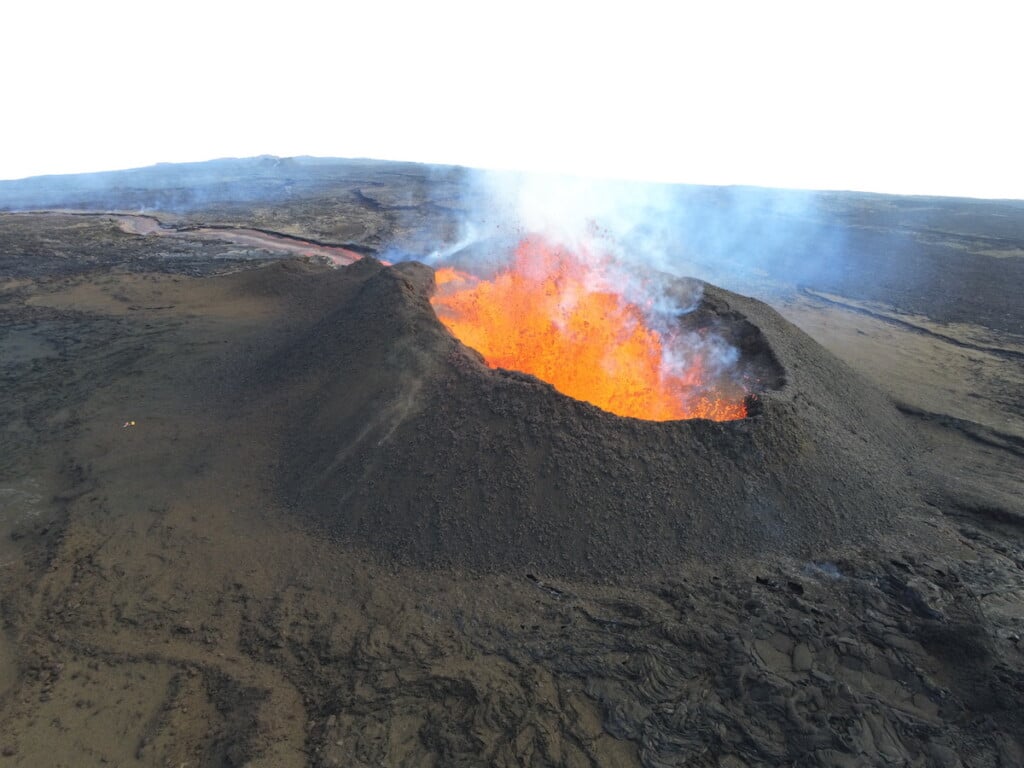
Updated Wednesday, Dec. 8, 4 a.m.
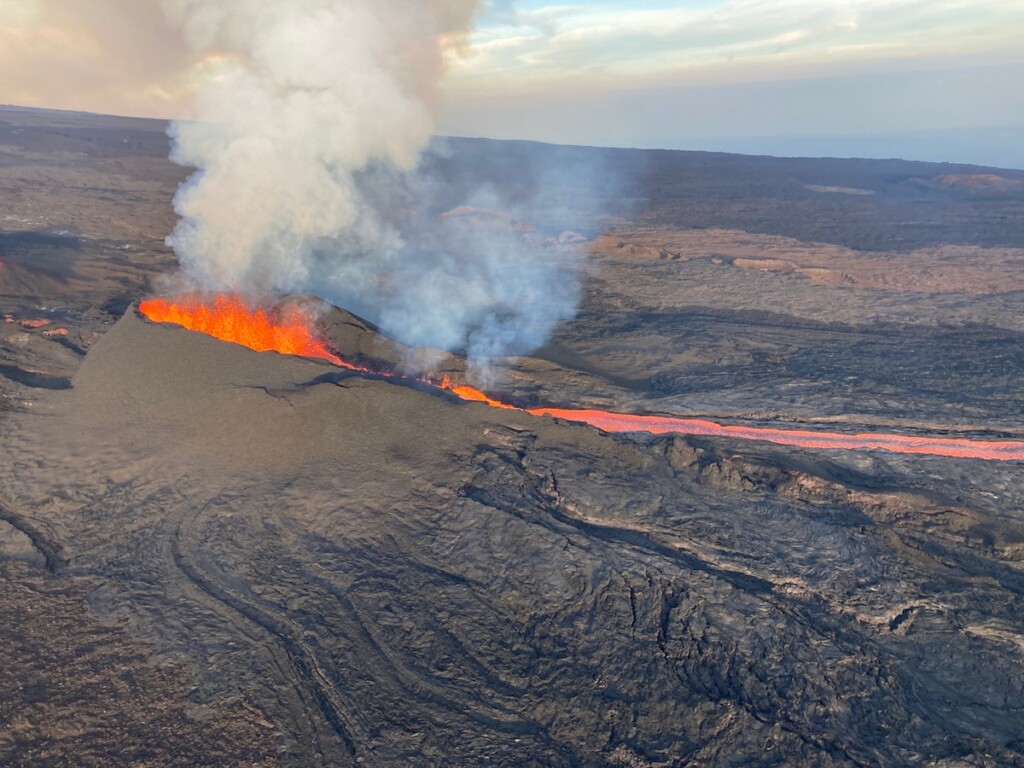
A morning overflight on Dec. 7, 2022, provided aerial views of fissure 3 erupting on the Northeast Rift Zone of Mauna Loa.
Photo: Courtesy of U.S. Geological Survey/M. Patrick.
The eruption of Mauna Loa continues today, though the flow has been slowing down as it approaches the Daniel K. Inouye Highway (aka Saddle Road).
Fissure 3 remains the only active fissure, feeding the lava flow downslope. As of yesterday, the flow front was about 1.8 miles from the highway and no communities are in threat.
Lava is still fountaining at the summit and the flow is steady and sustained, according to Hawaiian Volcano Observatory geologist Matthew Patrick.
View this post on Instagram
All this activity has draw hordes of visitors to Mauna Loa. Many hotels in Hilo don’t have rooms until after Christmas and helicopter tours are booked through the end of the year.
“We’re just coming off a slow season, right after Thanksgiving, then the volcano erupted and we’ve been slammed,” says Tiffany McHowell, director of marketing for Paradise Helicopters, who said the company is booked through December and the wait list is 80 deep. “We stopped doing our Kīlauea tour because no one is interested in seeing Kīlauea right now. It’s all Mauna Loa.”
Since it opened on Dec. 1, the 4-mile-long public viewing area set up by Hawaiʻi County as seen more than 17,000 vehicles come through, says Big Island Mayor Mitch Roth. This is the safest place to view the flow.
But Roth noted that people have been ignoring safety barriers and trespassing to get a closer look at the flow. The county is considering closing the highway — which includes the viewing area — sooner if more people continue to hike toward the flow.
“We’ve had people trying to get to the front [of the flow], and that’s very dangerous,” he says, adding people have left trash and marshmallows at the flow. “It’s not only bad for the environment and people are trespassing, but it’s really disrespectful to Hawaiians and their love for Madame Pele and the culture of Hawaiʻi.”
Updated Tuesday, Nov. 29, 5:29 p.m.
View this post on Instagram
As of this afternoon lava was fountaining at Fissure No. 3, consistently between 131 and 164 feet, and Fissure No. 4 between 16 and 33 feet, according to the U.S. Geological Survey. Several lava flows are traveling in a northeast direction, with the longest and largest flow coming from Fissure No. 3.
There is no active lava within Moku’āweoweo caldera, and there is no lava erupting from the Southwest Rift Zone.
Hawaiʻi Volcanoes National Park remains open, though Mauna Loa Road from the gate at Kīpukapuaulu is still closed. The summit, cabins and high-elevation areas of Mauna Loa have been closed since early October when the volcano began to show signs of unrest and increased seismicity. Mauna Loa Observatory Road, outside of the park, is also closed to the public.
Starting today, you can’t stop or park along the Daniel K. Inouye Highway (aka Saddle Road) between Mile Marker 16 and 31, as spectators are creating road hazards. You can park in designated parking lots off the highway.
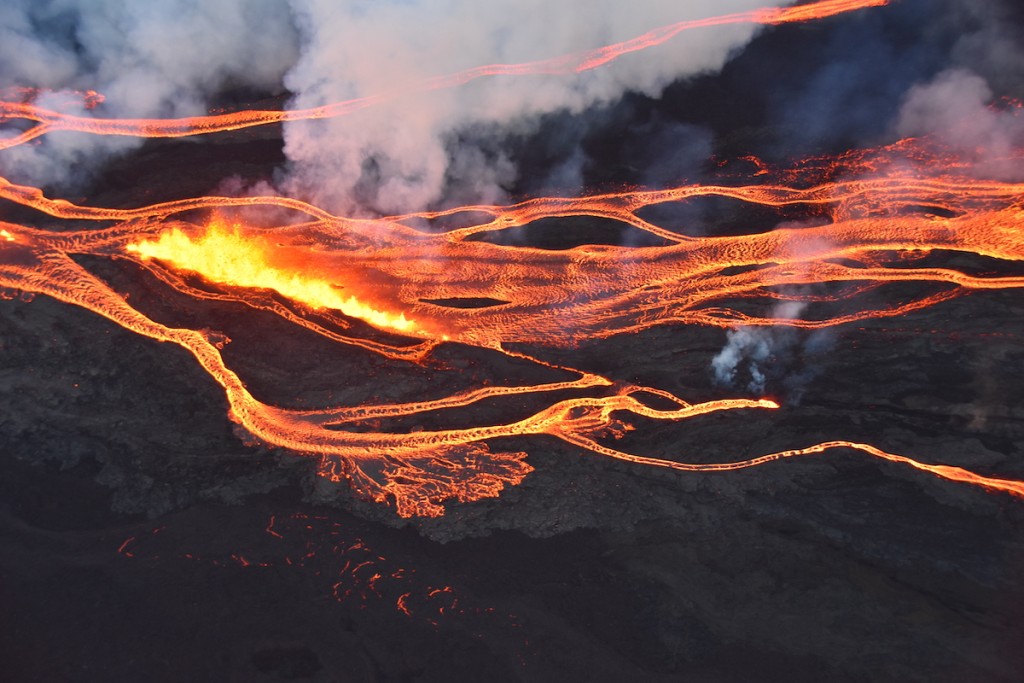
Aerial photo captured during an overflight of the Northeast Rift Zone eruption of Mauna Loa at approximately 5-6:30 p.m. HST on Nov. 28, 2022. This photo is looking at the line of fissure vents erupting above 10,000-foot elevation on the Northeast Rift Zone of Mauna Loa. Lava flows being generated from the line of fissure vents are on the northeast flank of Mauna Loa.
Photo: Courtesy of Civil Air Patrol
Sulfur dioxide (SO2) emission rates of approximately 250,000 tonnes per day (t/d) were measured on Monday. The eruption could cause vog conditions, ash in the air, and levels of sulfur dioxide to increase and fluctuate in various areas of the state. Conditions are changing rapidly, and poor air quality may be very localized. Hawai‘i residents and visitors are advised to be prepared for and aware of the surrounding conditions, and how they may react to poor air quality or vog. In the event of voggy conditions, you should reduce outdoor activities, avoid outdoor exercise, drink a lot of water and stay indoors if you have pre-existing respiratory conditions including asthma, bronchitis, emphysema, and chronic lung and heart disease. Wearing face masks—especially KN95 and N95—helps. Find more information on vog conditions here.
New webcam views of the Northeast Rift Zone of Mauna Loa are available at the links below:
- https://www.usgs.gov/media/webcams/m5cam-mauna-loa-fissure-3-eruption-northeast-rift-zone
- https://www.usgs.gov/media/webcams/m6cam-mauna-loa-northeast-rift-zone-uprift-view-wsw
- https://www.usgs.gov/media/webcams/m4cam-mauna-loa-northeast-rift-zone-downrift-view-ene
Updated Monday, Nov. 28, 1:06 p.m.
Hawaiʻi Volcanoes National Park remains open following a new eruption on Mauna Loa that began in the summit caldera late Sunday night and migrated to the northeast rift zone Monday morning.
The park closed Mauna Loa Road from the gate at Kīpukapuaulu Monday morning to vehicles. The summit, cabins and high-elevation areas of Mauna Loa have been closed since early October when the volcano began to show signs of unrest and increased seismicity. In addition, Mauna Loa Observatory Road outside of the park is also closed to the public.
View this post on Instagram
Though lava is flowing down one side of the volcano, the eruption is not threatening communities, the U.S. Geological Survey reported.
“All indications are that the eruption will remain in the Northeast Rift Zone,” the agency said in an advisory, referring to an area where a volcano is splitting, allowing for lava flow. “Volcanic gas and possibly fine ash and Pele’s Hair (strands of lava glass) may be carried downwind.”
This is the first time Mauna Loa, the world’s largest active volcano, has erupted since 1984. This new eruption is expected to lure visitors to the national park on Hawaiʻi Island to see eruptions from both Kīlauea and Mauna Loa volcanoes. Viewing areas along Kīlauea caldera before sunrise revealed a massive glow from Mauna Loa caldera, Mokuʻāweoweo (13,677 ft. elevation) and a smaller lava lake within Halemaʻumaʻu (4,009 ft.) at the summit of Kīlauea.
Kīlauea has been erupting since Sept. 29, 2021 with lava confined to the summit lava lake.
“Hawaiʻi Volcanoes National Park is keeping close watch on Mauna Loa in tandem with our colleagues at USGS and Hawaiʻi County Civil Defense,” said Hawaiʻi Volcanoes National Park superintendent Rhonda Loh. “The park is currently open, but visitors should be prepared and stay informed,” Loh said.
If you’re planning a trip to Hilo, check with your airlines. Already, Southwest Airlines cancelled flights from Honolulu to Hilo International Monday because of the eruption, the airline announced.
Visitors should check www.nps.gov/hawaiivolcanoes for closure updates, safety alerts, air quality and other information including links to the USGS Hawaiian Volcano Observatory webcams and eruption updates.
Updated Monday, Nov. 28 at 7 a.m.
Mauna Loa, the world’s largest active volcano on Hawaiʻi Island, is erupting for the first time in 38 years.
View this post on Instagram
Scientists at the Hawaiian Volcano Observatory said the eruption began at about 11:30 p.m. Sunday HST in Moku’āweoweo, the summit caldera of the volcano. Right now, the U.S. Geological Survey says lava is contained to the caldera. There’s not threat to nearby communities and no evacuation orders.
The eruption, though, did spark an ashfall advisory Monday for Hawaii’s Big Island and surrounding waters until 6 a.m. HST
“People with respiratory illnesses should remain indoors to avoid inhaling the ash particles and anyone outside should cover their mouth and nose with a mask or cloth,” the National Weather Service in Honolulu warned.
Mauna Loa, which covers half the island of Hawaii, has erupted 33 times since 1843, the volcano’s first “well-documented historical eruption,” according to the US Geological Survey. It last erupted in 1984. Dozens of earthquakes detected in October, and an eruption wasn’t unexpected.
The increased activity prompted Hawaiʻi Volcanoes National Park to close the Mauna Loa summit to all backcountry hikers until further notice. Mauna Loa Access Road is also closed.
Check out the USGS webcam of Mauna Loa here. And check back here and at @hawaiimagazine on Instagram and Twitter for more updates.
